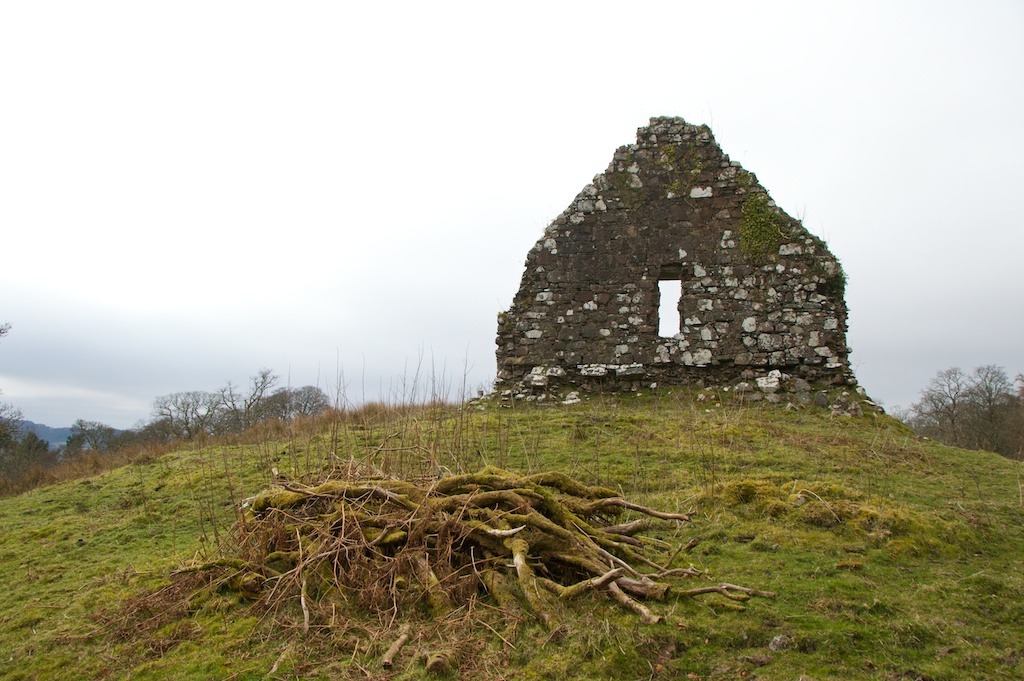
Ardchattan: in the footsteps of St Baodan
“Upon a high ridge behind the Priory are the church and burying-ground of St. Baodan, the patron saint of the parish.”
‘Deirdre and The Lay of the Children of Uisne’ translated by Alexander Carmichael, pub. 1914, via NLS
A couple of years ago I wrote about the wonderful old Priory at Ardchattan, on the shore of Loch Etive in Argyll.
In March this year we went there again. It was the week before Easter, and slightly earlier in the season than our last visit: the first primroses were out, and but the daffodil buds were still tightly wrapped against the chilly breeze.
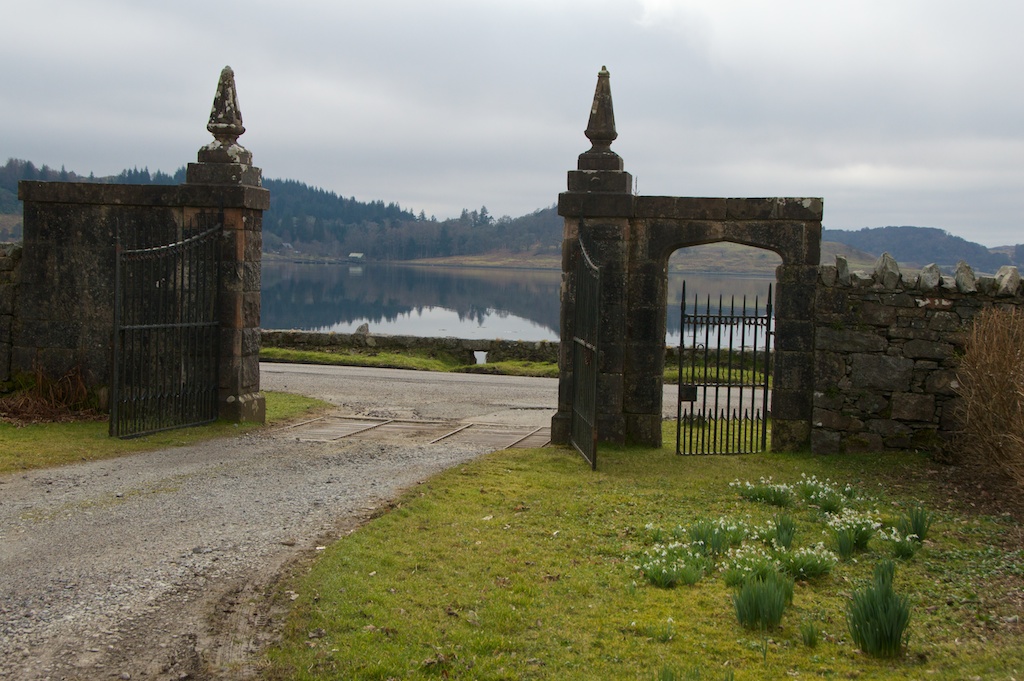 We didn’t go into the Priory itself, but instead we went through a gate into a field and headed up the hillside, past some cows that were idling the afternoon away, and along the side of a burn until we came to a small ruined building. This was once a church, dedicated to St Baodan.
We didn’t go into the Priory itself, but instead we went through a gate into a field and headed up the hillside, past some cows that were idling the afternoon away, and along the side of a burn until we came to a small ruined building. This was once a church, dedicated to St Baodan.
 This simple little building must have a long history, but most of it remains deeply hidden. It is thought to date from the 15th century, and may have fallen out of use sometime in the mid-1600s, but no one knows for sure. It was reported as being ruinous in 1678, and for the next 50 years local services were held in Ardchattan Priory, before a new church was built nearby.
This simple little building must have a long history, but most of it remains deeply hidden. It is thought to date from the 15th century, and may have fallen out of use sometime in the mid-1600s, but no one knows for sure. It was reported as being ruinous in 1678, and for the next 50 years local services were held in Ardchattan Priory, before a new church was built nearby.
The RCAHMS sums it up quite neatly:
“Uncertain age. Oblong. Random rubble, much dilapidated. Overgrown. Roofless. Window in each gable.”
and then adds an interesting footnote:
“Burnt to the ground c.1800.”
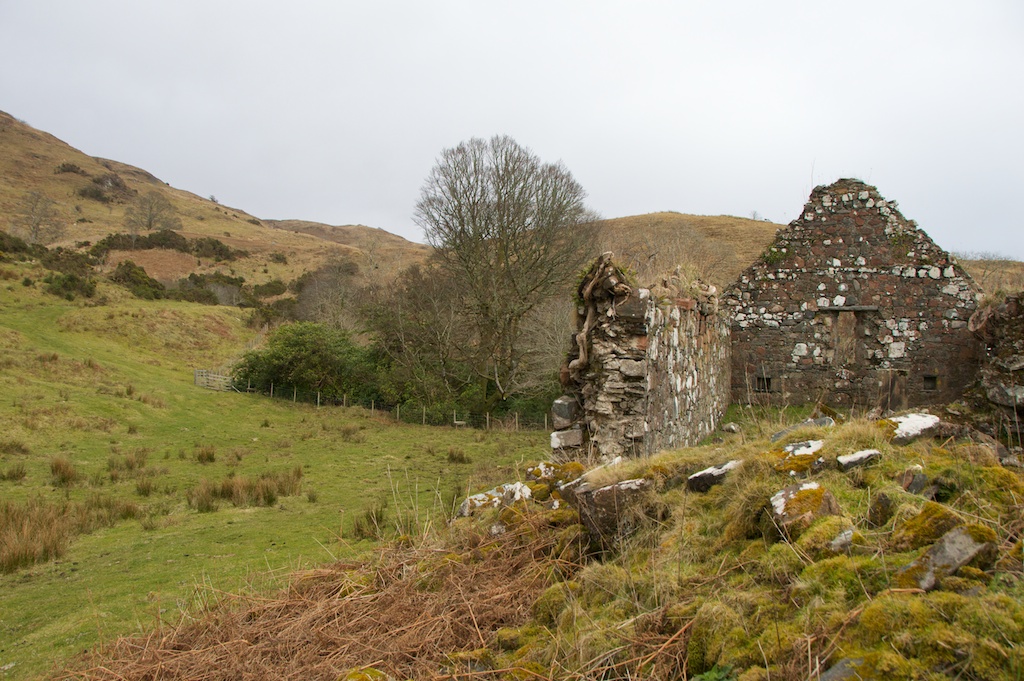 On the surface, it therefore appears that Ardchattan Priory was founded long before this little church was built, but by its name I wonder if the opposite is true. In the 13th century, something would have drawn the Valliscaulian monks to Ardchattan, and the presence of an ancient shrine and a holy well (Tobar Baodan or Baodan’s spring issues from the hillside nearby) would have held a strong appeal. But this is purely speculation.
On the surface, it therefore appears that Ardchattan Priory was founded long before this little church was built, but by its name I wonder if the opposite is true. In the 13th century, something would have drawn the Valliscaulian monks to Ardchattan, and the presence of an ancient shrine and a holy well (Tobar Baodan or Baodan’s spring issues from the hillside nearby) would have held a strong appeal. But this is purely speculation.
“There is a forest walk from the A828 just past the Sea Life Centre – it is called the Coffin Trail and it leads up to this ruin.”
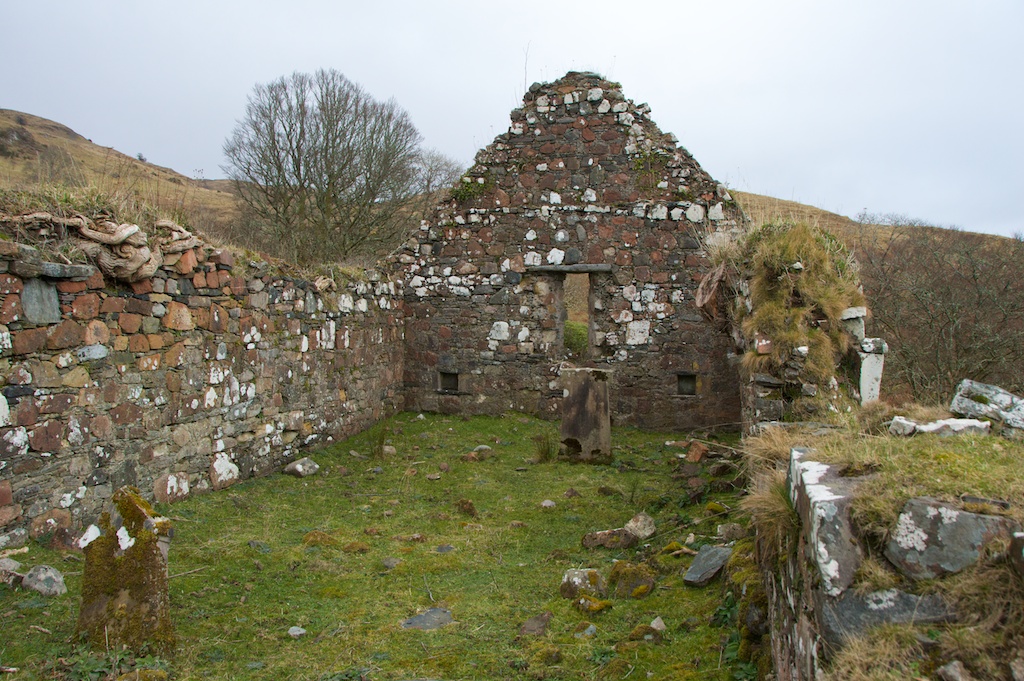 In the east gable wall, two aumbries or cubby holes can be seen, and the east window is still there, but that is pretty much it in terms of surviving features; instead, in the walls on either side, the trunks of dead trees bulge from the stonework, showing just how overgrown this place must have become when it was abandoned. The branches may have been felled to preserve the structure, but it would be impossible to remove their trunks as the walls would come away with them. Most of the west gable has fallen since the date of an RCAHMS visit in 1980, as the surveyor noted “a window in each gable”.
In the east gable wall, two aumbries or cubby holes can be seen, and the east window is still there, but that is pretty much it in terms of surviving features; instead, in the walls on either side, the trunks of dead trees bulge from the stonework, showing just how overgrown this place must have become when it was abandoned. The branches may have been felled to preserve the structure, but it would be impossible to remove their trunks as the walls would come away with them. Most of the west gable has fallen since the date of an RCAHMS visit in 1980, as the surveyor noted “a window in each gable”.
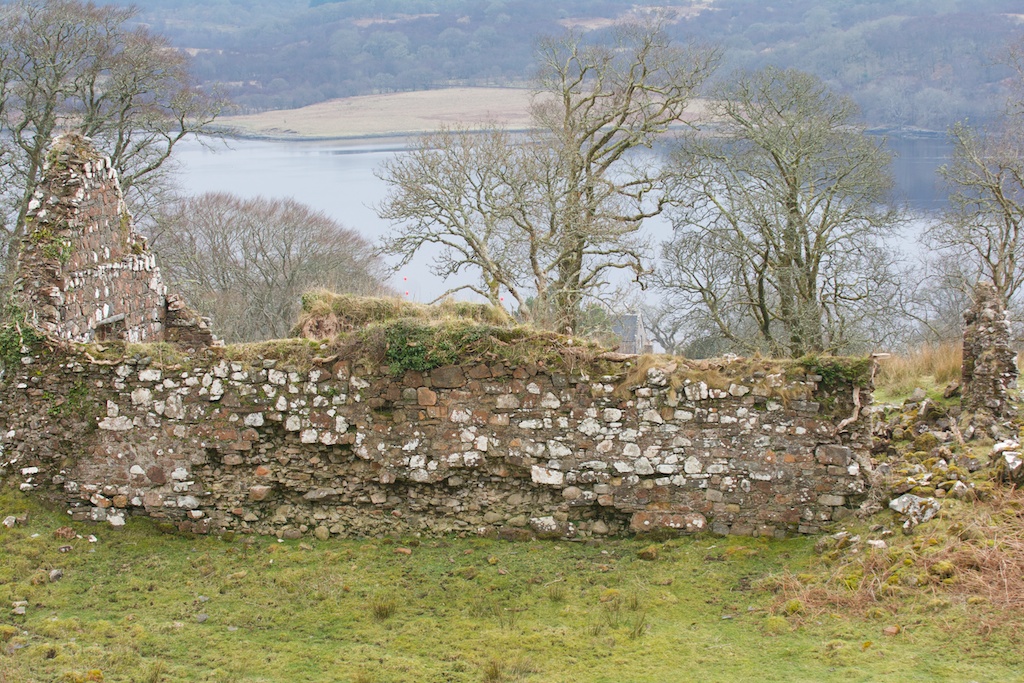 The walls are rubble-built, and I wonder if they were originally rendered both outside and inside, like the chapels at Keills and Kilmory Knap.
The walls are rubble-built, and I wonder if they were originally rendered both outside and inside, like the chapels at Keills and Kilmory Knap.
What’s left is a crumbling shell, lonely but not lifeless: ferns and mosses are softening the broken edges, and thrushes find the slabs very handy for tapping snails. Like so many of these old churches – roofless or otherwise – you can stand in the nave and feel the stillness.
Kilmodan’s gravestones
Assuming that the place was indeed burnt to the ground around 1800, this would explain why some grave stones dating from the 19th century can be found within the building itself, because this is what happened with many derelict churches over time. Some of them tell the fragments of interesting stories:
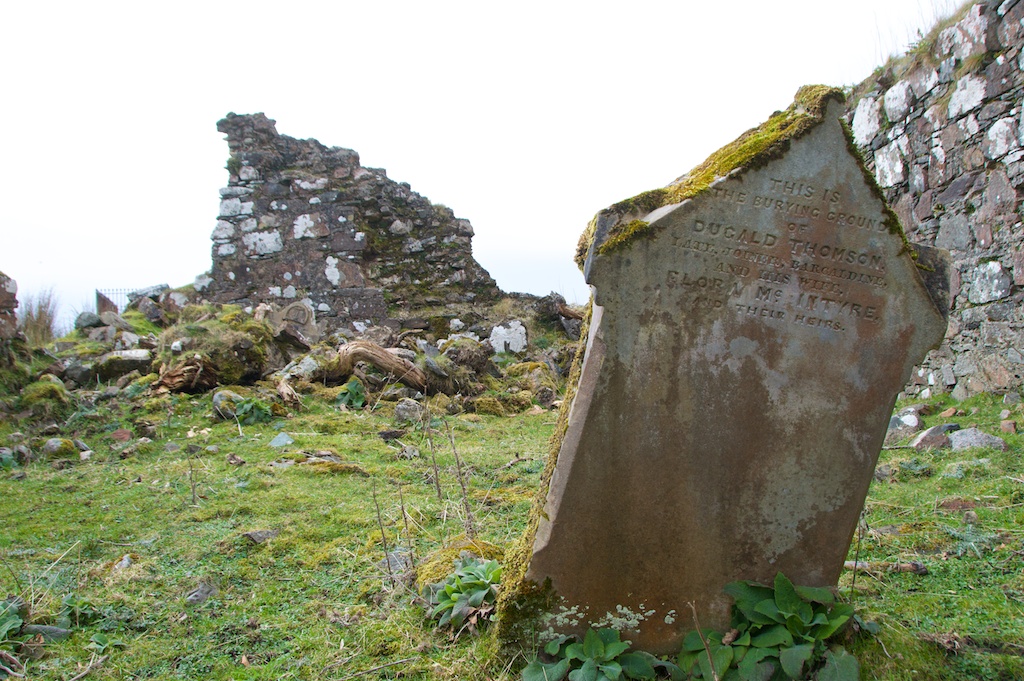 “This is the burying ground of Dugald Thomson, late joiner, Barcaldine, and his wife, Flora McIntyre, and their heirs”
“This is the burying ground of Dugald Thomson, late joiner, Barcaldine, and his wife, Flora McIntyre, and their heirs”
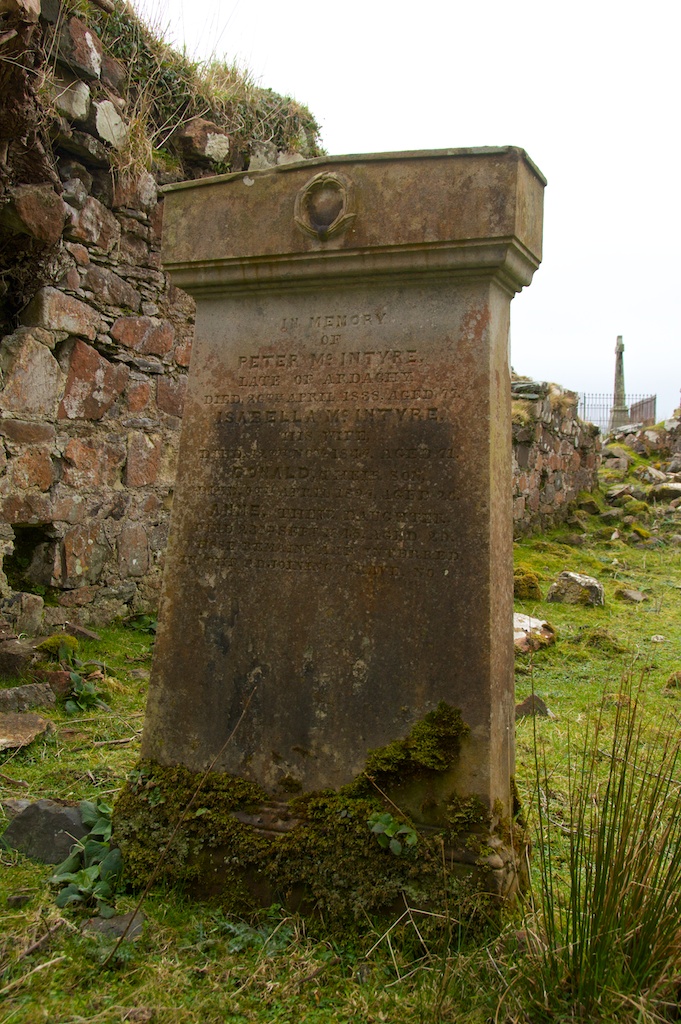 “In memory of Peter McIntyre, late of Ardachy, died 26th April 1838 aged 77
“In memory of Peter McIntyre, late of Ardachy, died 26th April 1838 aged 77
Isabella McIntyre, his wife, died 12th Nov 1847 aged 71
Donald, their son, died 5th (?) April 1824 (?) aged 26
Anne, their daughter, died 23rd Sept 1845 aged 29
whose remains are interred in the adjoining grave No.2(?)”
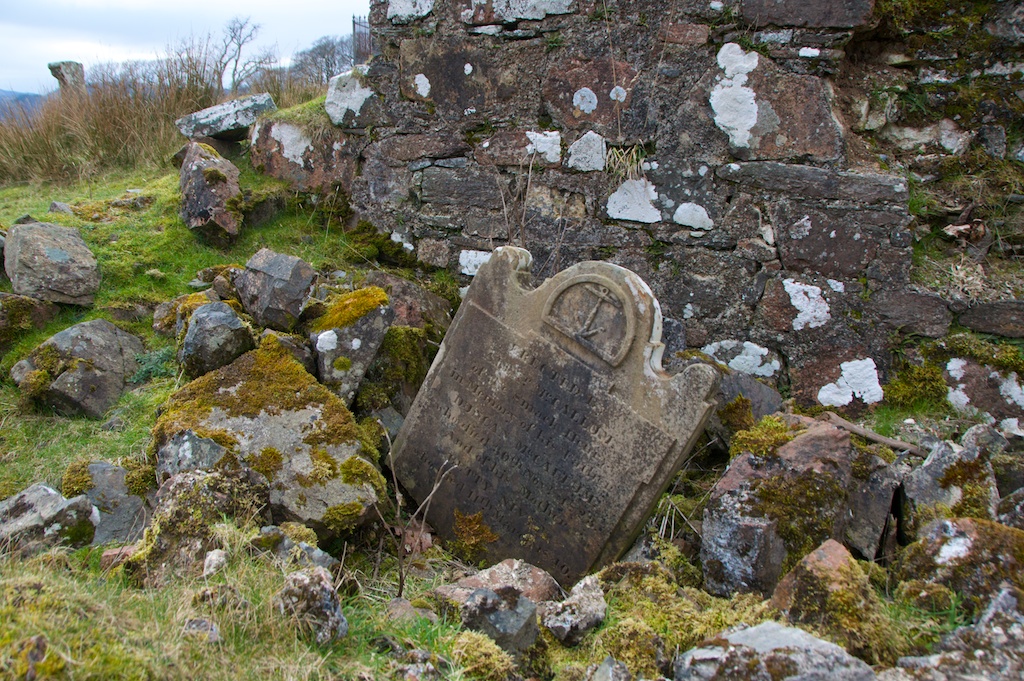 “Erected by Alexʳ McCallum of the Smack Henry
“Erected by Alexʳ McCallum of the Smack Henry
In memory of his father Duncan McCallum who died 30th Novʳ 1823
and of his Mother Betty Niven who died 11th March 1840″
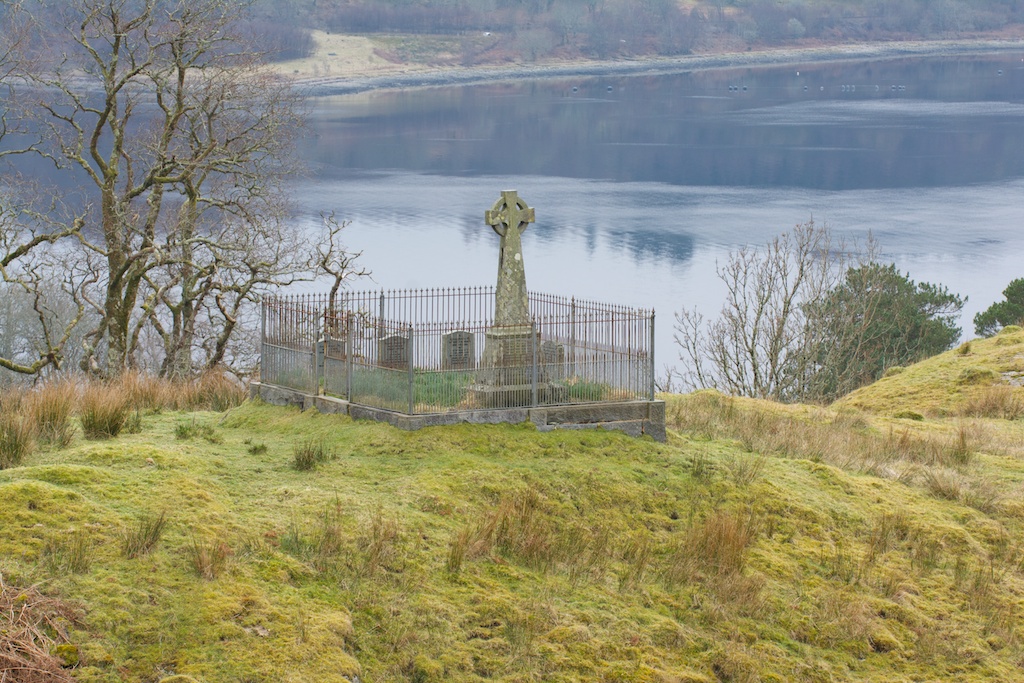 Small burial ground nearby (19th century onwards)
Small burial ground nearby (19th century onwards)
Looking on a large-scale map, I see the area around the church still bears the name Baile Mhaodain, which suggests that it was once the ‘place’ or ‘home’ of St Baodan. It’s possible that it still is.
Sources:
- RCAHMS
- Saints in Scottish Place-Names
- Undiscovered Scotland
- ‘Saint Modan of Rosneath: A Fragment of Scottish Hagiology‘ by Robert Herbert Story, 1878
- National Library of Scotland
- Geograph.org
Photos copyright © Colin & Jo Woolf
Footnote: I originally described this church as being dedicated to St Modan, assuming that the name derived from Baodan or Bhaodain, and it is indeed described as ‘Kilmodan’ in historical records. However, a reader has kindly pointed out that St Baodan and St Modan were two different men, and the confusion arose in the 19th century because of the similarity of sound in genitive mutations. My thanks to Gilbert, whose helpful comments you can read below.
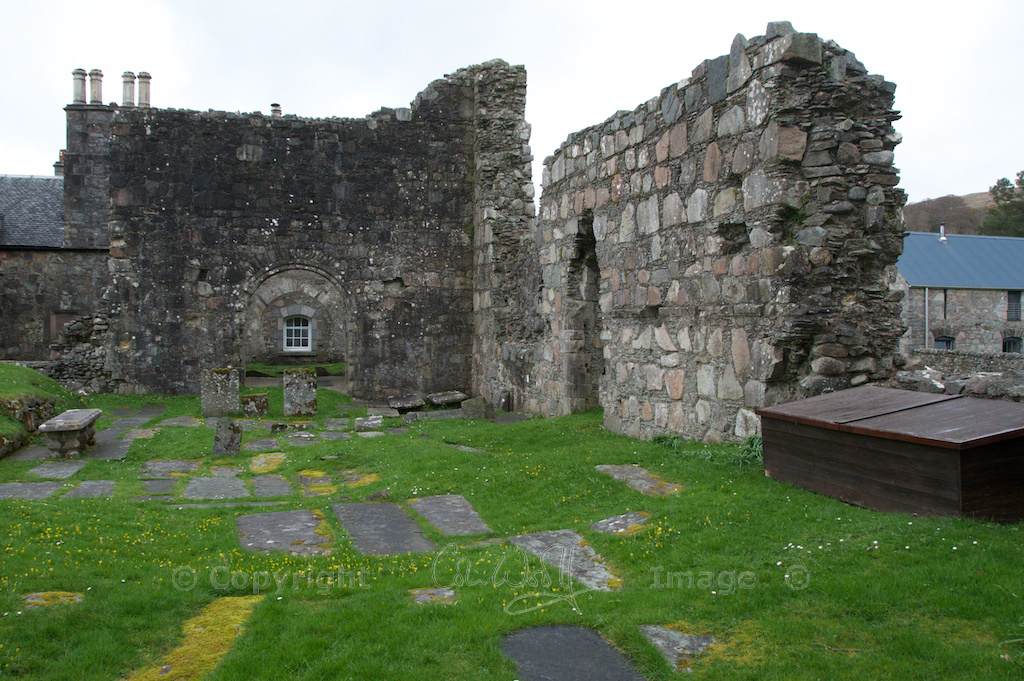
Read about Ardchattan Priory, just down the hill from here; or explore some more lovely little churches of Argyll:
- Keills Chapel, Knapdale
- Kilmory Knap
- St Moluag’s Cathedral, Lismore
- Kilvickeon, Isle of Mull
- St Brendan’s monastery on the Garvellachs

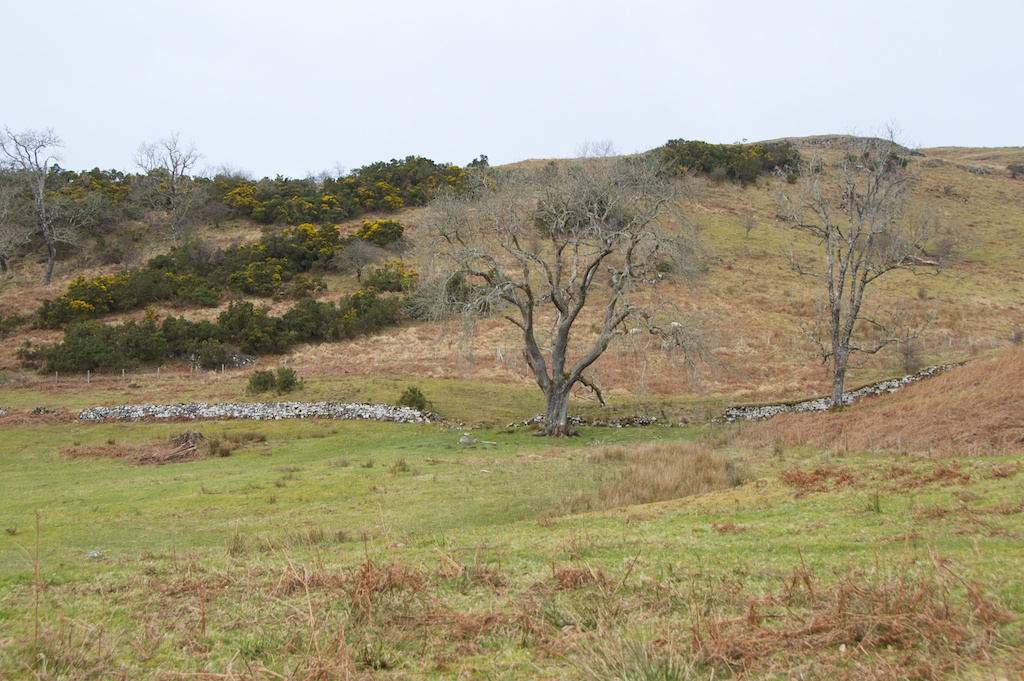
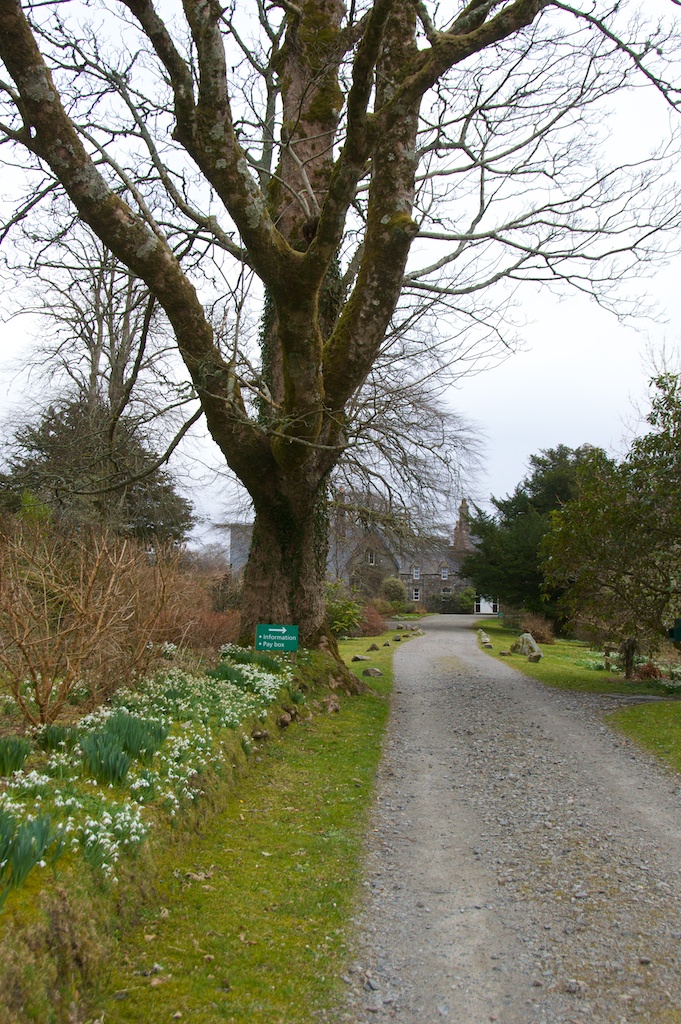
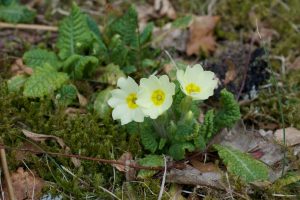
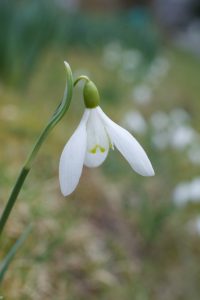
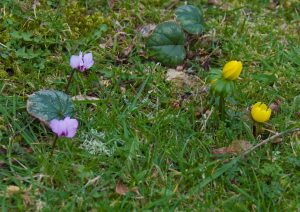
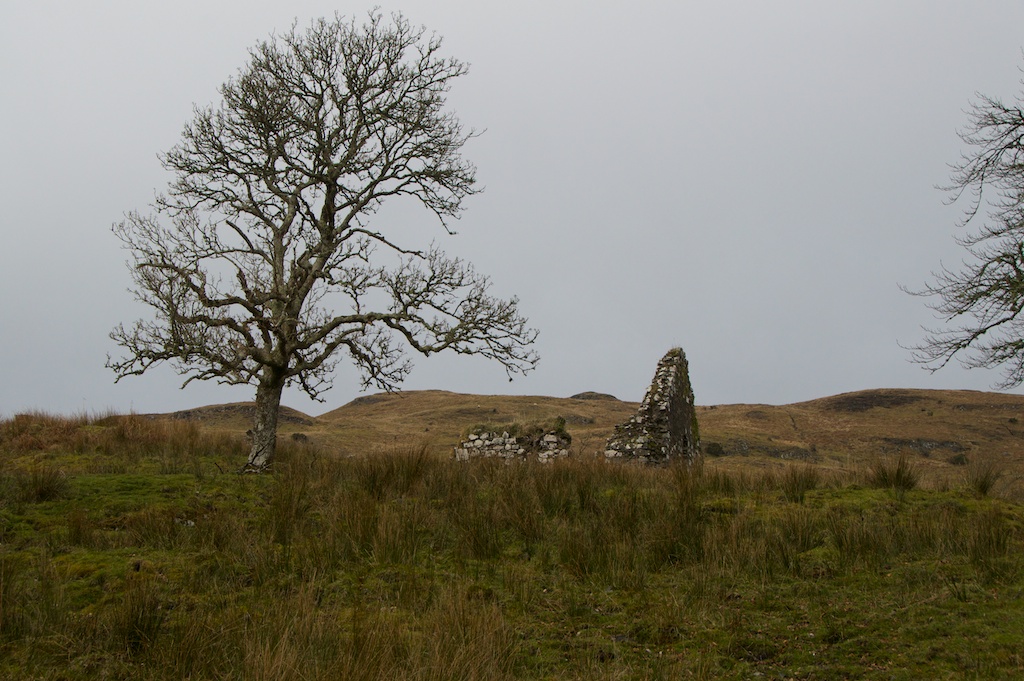
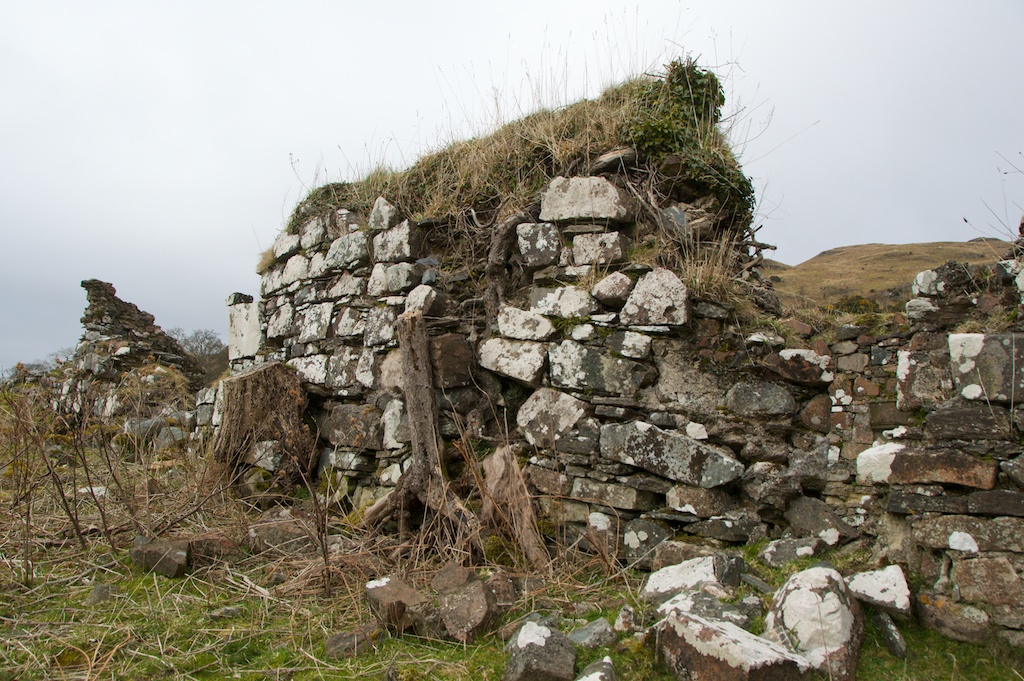
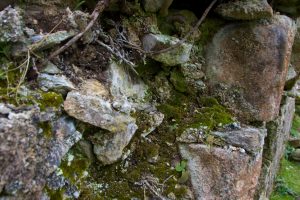
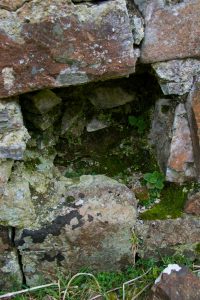
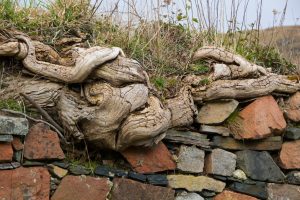
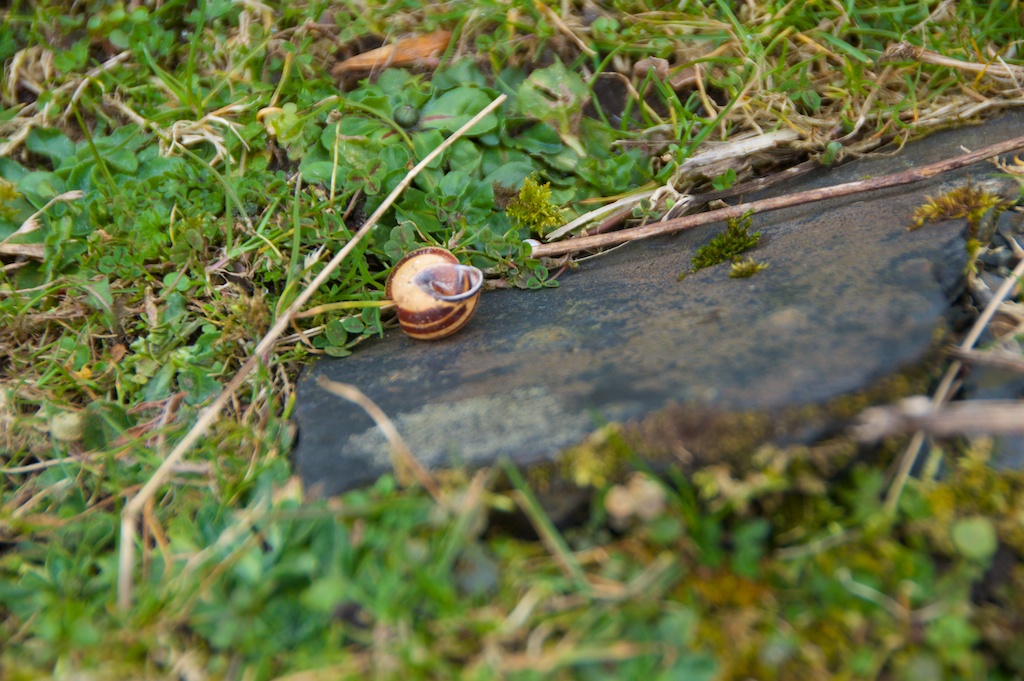
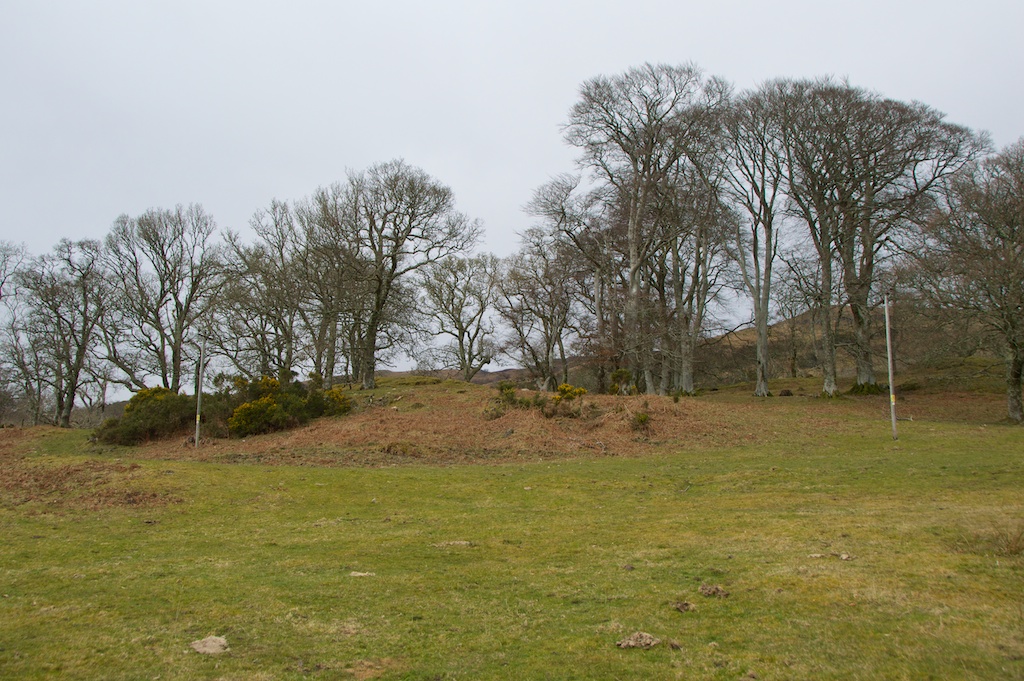
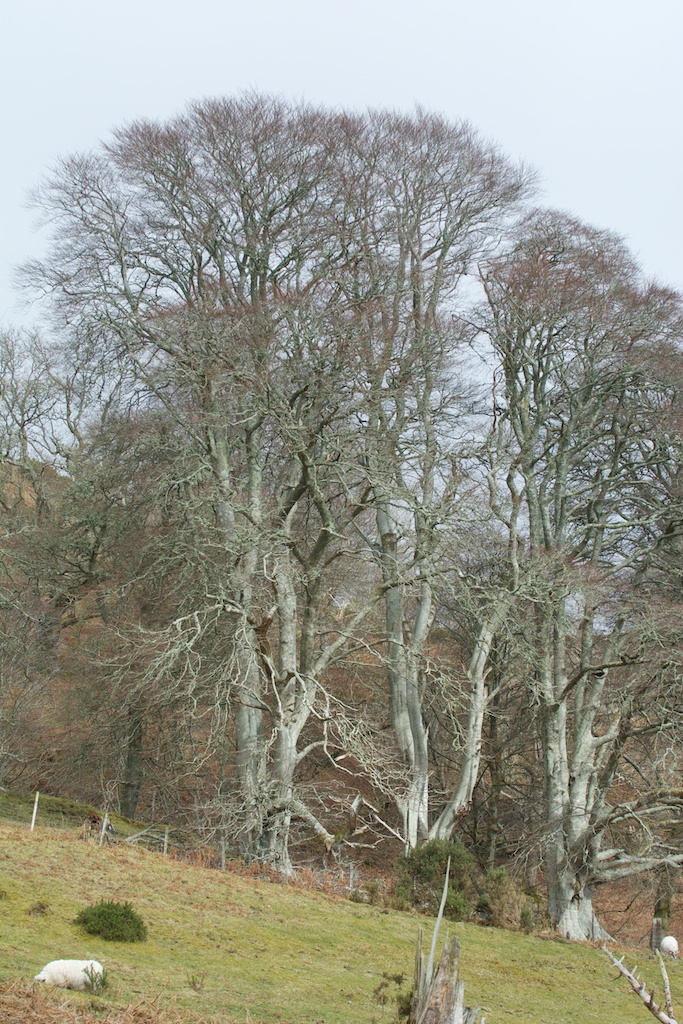
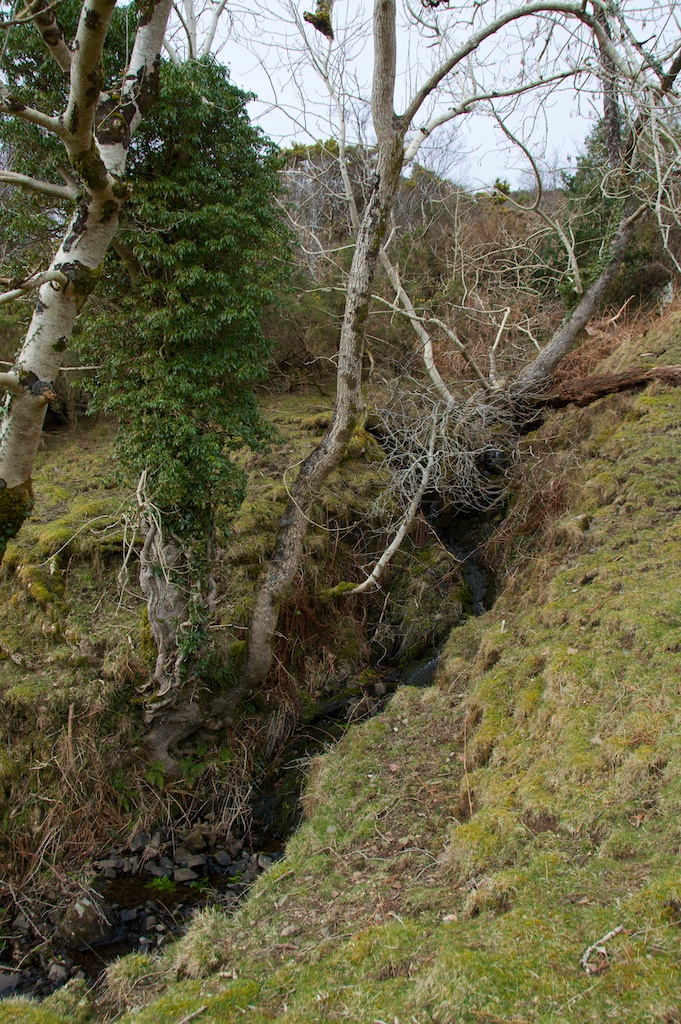

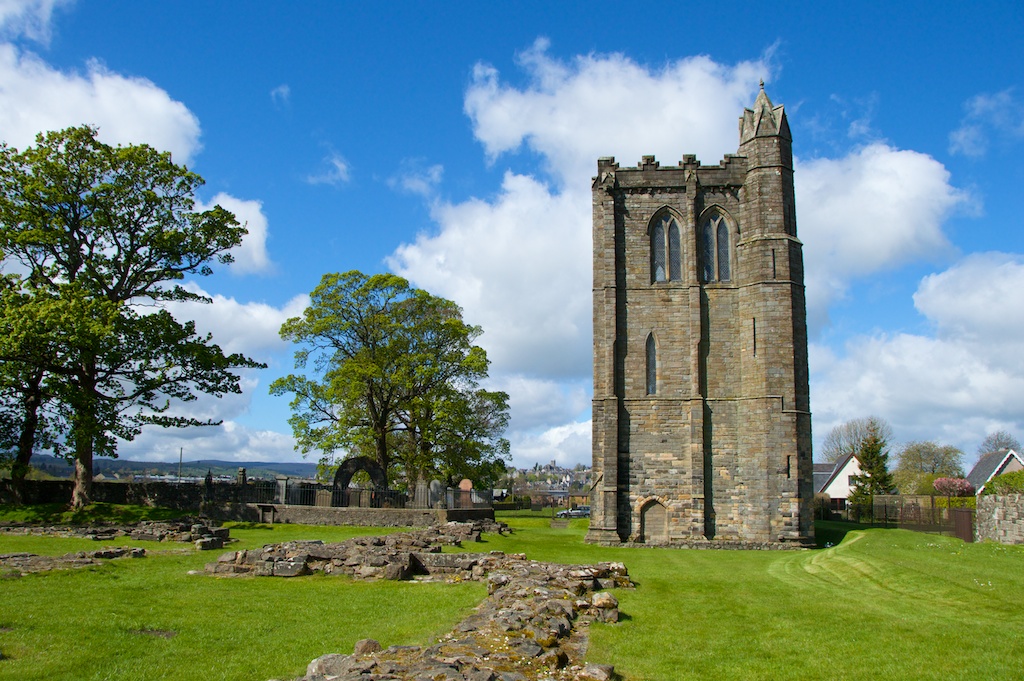
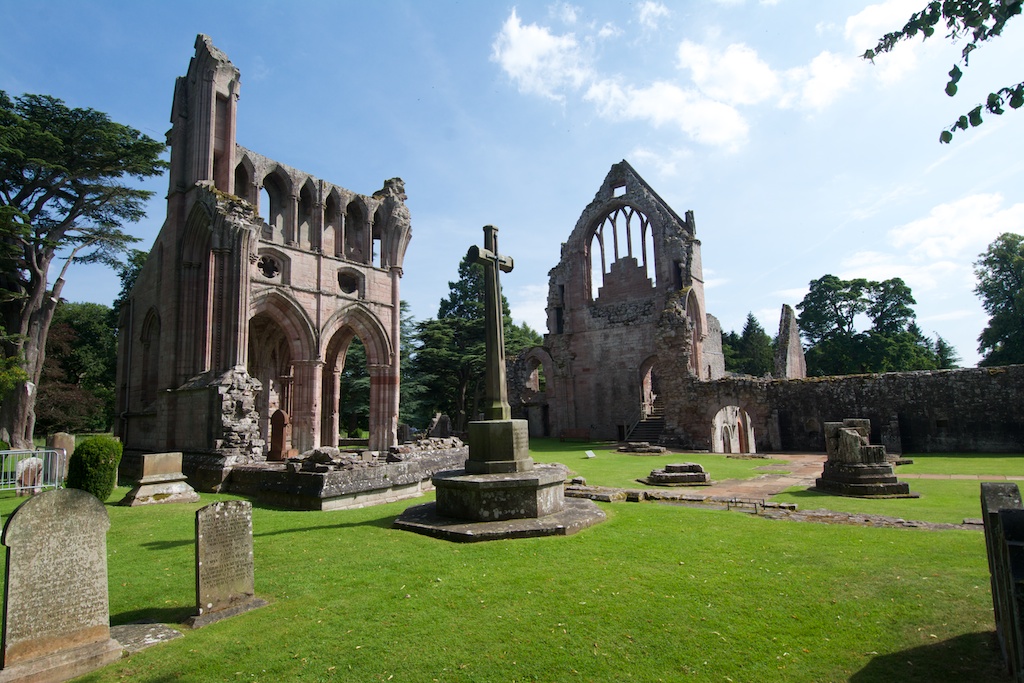
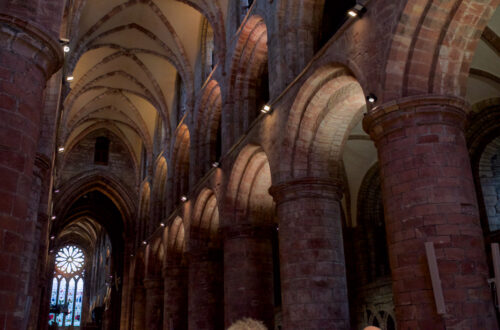
26 Comments
Scott K Marshall
It must be satisfying to pull information together particularly over several sites – when you clearly start to connect thesis
Jo Woolf
It’s a lovely thing, Scott, as you feel as if you’re getting to know the landscape in a wider sense. Having said that, I’m now re-thinking my original theories on the identity of St Modan/Baodan, thanks to a reader (below).
Lorna
Lovely photographs, and interesting old gravestones. It looks very peaceful, just the sort of undisturbed location you might want as a final resting place.
Jo Woolf
Thank you, Lorna! So blissfully peaceful, and I had the same thought while I was exploring the church and its gravestones.
gilbertscm@aol.com
A delightful essay, with lovely images. Thank you. Just a word about the saint commemorated here, however. It isn’t Modan, but Baodan. The confusion arose in the nineteenth century because the genitive form of the names Maodán and Baodán sound very similar, being Mhaodáin and Bhaodáin, in which Mh- and Bh- are both pronounced /v/. But all the early forms of the name of the church, the settlement and the well confirm that it is St Baodán who is commemorated here. Worth consulting http://www.saintsplaces.gla.ac.uk
See http://saintsplaces.gla.ac.uk/add-place/index.php?id=1324288088 and http://saintsplaces.gla.ac.uk/add-place/index.php?id=1324286529
Jo Woolf
Thank you for your kind comment, and for the links! I have had a look at the Saints in Scottish Place-Names website but unfortunately the last two links only lead me to a ‘log-in’ page and it does not offer me an option to create an account. On the home page, a search for ‘Baodán’ turns up no results. So, is Baodán a different man from the one who founded Kilmodan at Glendaruel? I see that the 13th century Priory Church at Ardchattan was dedicated to St Modan, which only confounds the issue. Any more info you could supply would be appreciated!
Jo Woolf
PS I have now found St Baodan’s church on the Saints website and I have amended my text accordingly. So, looking at this page, there seem to be four saints with a possible link to the site. Interesting! Thank you again.
Pat
Lonely, but peaceful. Lovely photos. Thanks for the information from the headstones. Abandoned graves make me a little sad, I always want to adopt them. That would keep me quite busy! Those old, twisted roots are beautiful. Not good for the walls, of course. Thanks, Jo. 🙂
Jo Woolf
Really glad you enjoyed it, Pat. Another quietly magical place. I know what you mean about the graves, and so many are lost altogether. I can only say that they are in the most perfectly restful place, above an idyllic loch shore. But yes, you’d be kept quite busy with looking after them if you came over here! The tree roots are certainly beautiful, almost a part of the structure now. Nature is endlessly surprising.
Elaine Forrest
Dear Jo Another really interesting and informative blog post . I must say thank you for the posts you make. When I see The Hazel Tree arrive in my inbox my heart lifts and I cannot wait to see where you are taking us this time. In your footsteps I have been to , Glenlyon, Dryburgh Abbey , Knapdale and Fortingall. I will add this latest destination to my list Have a happy Easter and thank you again. Kind regards Elaine
Jo Woolf
What a lovely comment, Elaine, and you are most welcome. When I know people love reading my posts as much as I love writing them (and visiting the places!) it really gladdens my heart. Places like this, and the Priory down below on the loch shore, are really special, for their almost timeless stories and their atmosphere. Thank you for your kind words, and wishing you a lovely Easter!
blosslyn
Lovely, we didn’t make that far as it had started to rain and I have since wondered what we would have found….haha now I know, many thanks for going and having a look:)
Jo Woolf
I meant to go up there the first time we visited, Lynne, and in fact it’s quite hard to see the church among the trees from down there. But it’s so perfectly peaceful, with superb views, as you can see. These Irish saints chose some fabulous places, when all’s said and done!
blosslyn
They certainly did Jo, beautiful locations for us to explore 🙂
Scott
There is a 19th Century book written by Robert Herbert Story D.D. and Minister of Rosneath in 1878 about this place and its ancient saint.The book is called Saint Modan of Rosneath and it is available on Google Books for free. It explains many things about this ancient place including the fact that there were a two Saint Modans but only the one from Rosneath was connected to this site. The book is quite informative. Thank you for writing this article.
Jo Woolf
Thank you so much for this link, and what a delightful book! I had initially assumed that the man associated with this site was the same as the one who founded the church in Cowal. However, one reader (Gilbert, whose comment you can see above) is of the opinion that the saint’s name at Ardchattan is Baodan, and he explains that confusion arose in the 19th century over two different saints – Baodan and Maodan – because of the similarity of their names when mutated by the genitive. http://saintsplaces.gla.ac.uk/place.php?id=1324286529 From a scan of the book by Story, I do see what you mean – he suggests that there was another Modan, whom he terms ‘the western abbot’ in addition to Modan ‘the northern bishop’. If Baodan was a different man from either of these, I have yet to discover any more about him. Meanwhile, I am enchanted by the legends of the ‘yellow bell’ and the boatmen of Loch Etive hearing its chimes, and the story of the serpent which appeared in the church doorway, and the possible origins of Clan Lulich. For me, the magic lies in old stories such as these, and I am looking forward to reading the book in full. Thank you very much again.
Fife Photos and Art
Great photos and fascinating post Jo 🙂
Jo Woolf
Thanks, Andy. Loch Etive holds a very special magic for me. Not quite sure what it is. I loved discovering this little church!
Fife Photos and Art
It certainly looks a magical place Jo, and finding the chapel is a definite added bonus 🙂
Pingback:
Glenda Hunter
Thank u Jo for these amazing pictures of time gone by ? information we have received clearly states peter mcintyre and isabella and 2 of their children are family omg its amazing to see their graves thank you so much……..Glenda
Jo Woolf
You are most welcome, Glenda! What a beautiful last resting place for Peter and Isabella – this little chapel at Ardchattan is one of my favourite places, such a feeling of peace which is hard to put into words.
Glenda Hunter
Jo im just so thank full u have been here and seen our ancestors tomb stones if it wasnt for ur beautitul pictures i would never had found them thank u so much ??? ur article is just awesome
Jo Woolf
I’m really happy for that, Glenda! 🙂 It’s lovely that you are able to see the graves and the location of the chapel. You are most welcome, and thank you for your lovely comments! By the way you may like to look at the Ardchattan Parish Archive website if you haven’t already (see Jill’s comment below) – the website is http://ardchattan.org.uk/archive/
Jill @ Ardchattan Parish Archive
This is a wonderful study of our old kirk, We are beginning to bring together the history of the people and the places of the whole parish of Ardchattan, which is a large undertaking, and will take us all a lifetime! . Your images are just so great, is there any possibility you could share copies of your photos from this visit with the local history archive, which is entirely community based? We have descendants of the people whose tombstones you have captured so well..
Jo Woolf
Hi Jill, and thank you! That sounds like a wonderful project. I would be delighted to share the images and any other info from this post that might be of help to you. Let me know if you can get them from the post itself or if you’d like me to email you images. If you prefer you can email me: jo(at)thehazeltree.co.uk